Best and Worst Disney Role Models for Girls and Young Women
Ever since the Disney Princess line began with Snow White in 1937, debate has raged over whether Disney’s princesses and other female protagonists are good role models for young women. Some argue yes, pointing to these characters’ kindness, gentleness, and patience as traits everyone should emulate. Others cry a vehement “no.” To them, the early Disney females are too passive and dependent on men, while later incarnations are spoiled, brassy, and perhaps mannish. The same moviegoers who applauded princesses like Brave’s Merida for being strong, later decried the messages she sent after she was given a “sexed-up makeover.” Many grown women love Mulan, while others claim her story is offensive because it teaches a woman must act like a man to be accepted or feel comfortable with herself.
When it comes to the role model question, it seems Disney heroines can’t win. However, some of these characters – princesses and otherwise – make better role models for girls and young women than others. Careful analysis of princesses and non-princesses shows some truly are worth emulating. Others embody more negative traits than positive, and don’t give our girls much to aspire to or work toward. One could argue that within the canon of Disney heroines, there is a group of top five best and top five worst role models.
Top Five Best Disney Heroine Role Models
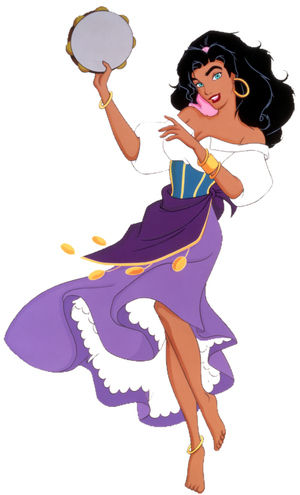
#5: Esmeralda, The Hunchback of Notre Dame
Esmeralda gets the lowest spot on this list for a few reasons. First, her film is not as well-known as it could be and is widely considered one of Disney’s worse installments. It’s noticeably darker than most Disney films. The villain Frollo is not simply a power-hungry, greedy monster. In Hunchback, he’s a fanatical priest who sees corruption “everywhere except within.” He kills Quasimodo’s mother and tries to drown the infant because he was born with deformities. He refers to Gypsies as “vermin,” but makes blatant sexual advances toward Esmeralda. Second, Esmeralda herself, though she resists Frollo, does engage in mildly provocative behavior, such as sensual dancing. Whatever their other feelings about Disney heroines, most parents would not want their daughters engaging in some of her behavior or repeating some of her sassy dialogue.
That said, Esmeralda’s positive behavior and character traits far outweigh her shortcomings. At her core, she is a gentle and kind woman who is no respecter of persons. When Quasimodo is abused during a festival with Frollo’s explicit approval, Esmeralda defies the priest and the law to free him. She does not judge him as ugly or a monster; she sees him as a friend who is worthy of love, dignity, and respect. Esmeralda’s attitude gives Quasimodo the chance to start rebuilding the self-concept Frollo and others have worked to destroy.
Quasimodo is not the only recipient of Esmeralda’s goodwill. She is one of Disney’s most selfless characters, with a deep concern for outcasts in her society. Though she is one herself, she doesn’t play the victim. “I ask for nothing; I can get by,” she sings in her famous solo “God Help the Outcasts.” She seeks divine intervention for her people and those like them, not wealth, fame, or even protection. The fact that she turns to God – a higher power than herself – for help teaches viewers there is a world out there bigger than themselves. It’s great to be strong and stand up for others. It’s required at times. Yet it’s also admirable to reach out to the world around and above us for friendship, support, and assistance. Esmeralda is a good portrait of what it means to strike a balance between changing one’s world and taking time to find your own place in it.
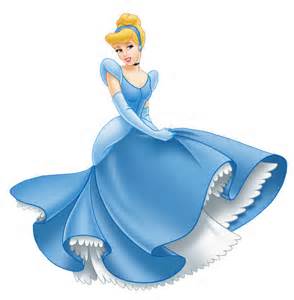
#4: Cinderella, Cinderella
The titular character of Disney’s twelfth animated feature is often accused of being passive, weak, and anti-feminist. Detractors allege she simply waits around for a prince to rescue her, not doing anything to change her dismal situation. Yet, these same detractors forget in her time period, Cinderella would have had few other options than to remain a servant to her abusive stepfamily. She is almost completely isolated because her stepmother doesn’t let her experience life outside her home. Furthermore, Cinderella never indicates she wants to be rescued. She only wants a chance to go to the ball – to have a night off, socialize, and be recognized as a person, as other young women her age do every day.
Cinderella’s goals, therefore, are much nobler than they seem at first. She communicates girls and women should want to be seen and heard, and there is nothing wrong with finding constructive avenues for that. Although she is perpetually dressed in rags, dirty from cinders, and treated like a slave, Cinderella never loses sight of her worthiness. Her poise, grace, and compassion indicate she remembers she was once a gentleman’s daughter. Her father may be gone and her days of leisure long over, but however unconsciously, Cinderella remembers who she is inside and acts on it.
No one should passively accept abuse, but they can maintain mature attitudes in the face of being wronged. Cinderella never lashes out at her stepfamily, refuses their orders, or takes her frustrations out on innocent people or animals. Note she isn’t emotionless; she does express anger and frustration at her lot in life, breaking down and crying piteously in one scene. When her stepmother locks Cinderella in her room and threatens to jeopardize her future with the prince, Cinderella yells, screams, and bangs at the door. She tries every way possible to escape and ultimately succeeds. The key is, she doesn’t resort to blame, victimization, or holding a grudge. While recognizing her situation is horrible and doing everything she can to get out, Cinderella maintains a positive outlook and hope that said situation will improve. Thus, she becomes an example of how girls and women – how everyone – should strive to act in the face of adversity.
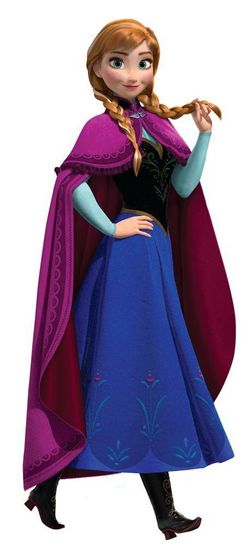
#3: Anna, Frozen
Princess Anna is another Disney heroine with an interesting mix of imitable and undesirable traits. Many viewers classify her as a negative role model because she becomes engaged to a prince she’s known less than a day. During much of the movie, she continues insisting this prince, Hans, is her true love. She sometimes comes across as weak, victimized, or naïve, much like Cinderella. However, Anna possesses a wealth of good characteristics.
Anna’s whimsy and zest are the first traits a viewer might notice and be drawn to. Like Cinderella, Anna spent her life incredibly sheltered. Unlike Cinderella, she fully recognizes there is a big world around her and can’t wait to explore it. She yearns to meet people, make friends, and have experiences she’s only dreamed of thus far. At the same time, she embraces the most ordinary things about Arendelle with her whole heart, such as a flock of baby chicks or castle gates thrown wide open for the first time in years. When tempered with prudence, Anna’s fearlessness and love of life are traits girls should strive to develop.
Along with her zest, it’s easy to notice Anna’s tenacity. From the time she’s a small child, “give up” is not in this girl’s vocabulary. She spends years persistently asking Elsa to “build a snowman” – in other words, come out and play, stop shutting the world out, and overcome her fears. When the sisters are older, Anna goes after Elsa to bring her back to Arendelle, although the older girl’s ice powers have terrified the citizens. “She’s my sister; she’d never hurt me,” Anna tells Kristoff with conviction, despite the physical evidence before her. With one line, Anna teaches viewers two valuable lessons. One, never give up on those you love. Two, what your senses tell or show you is not always the same as what is true. Despite her monumental mistake with Hans, Anna slowly becomes an example of maturity and discernment. She may be a young adult during most of Frozen, but emotionally, she grows up much the same way real girls do.
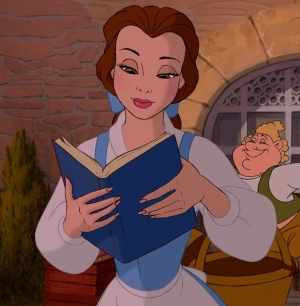
#2: Belle, Beauty and the Beast
If Cinderella has long been considered an enemy of feminism, Belle of Beauty and the Beast has been lauded as one of the ultimate heroines girls should want to be like. There are several reasons for this, which earn Belle one of the top two spots on this list.
Belle’s love of books is the first thing to catch viewers’ attention. When we first meet her, she is headed to town with a book in her basket and goes straight to the bookseller’s to exchange it for an old favorite. When the bookseller tells Belle she can keep the novel, our heroine is overjoyed. Her character communicates reading is wonderful and books are priceless treasures to be enjoyed. However, Belle doesn’t limit her love of reading to fairytales. Through her use of words like “primeval,” the movie subtly points out she’s always possessed an intellectual bent. She’s smart, and she teaches girls it’s acceptable, even cool, to use their brains.
Like Esmeralda, Belle resists the status quo, though in a more understated way. While other girls swoon over Gaston, she recognizes him for the arrogant and self-serving buffoon he is. Her neighbors think her father is at best strange and at worst crazy, but Belle gives him unconditional love and loyalty. She praises her father’s inventions and believes they are useful, and later sacrifices her freedom for him. She is able to see past the Beast’s rough, intimidating exterior. Her politeness, gentleness, and self-sacrifice inspire the Beast to act more like the human he is inside than the animal he’s let himself become.
Finally, Belle is worth emulating because she’s open-minded. In short order, she figures out the Beast’s castle is enchanted. Unlike a typical villager who might suspect sinister plots are afoot, she gladly accepts this quirk of her new environment. When Cogsworth the butler/clock seems alarmed that Belle has discovered the enchantment, she puts him at ease with a wry smile. “I figured it out for myself,” she says without malice or suspicion. Throughout the movie, she never seems confused or bothered that the housekeeper is a teapot, or that the stove can talk while it prepares her food. They aren’t objects, but rather her friends.
Belle is most open-minded with the Beast. At first, his behavior naturally puts her off. Yet she is gradually persuaded there is good in him, and works to help him find it. Even when the Beast does something disgusting like diving face first into his soup, Belle reacts with understanding instead of horror. In her quiet, persistent way, she teaches us how to act when we encounter someone different from us. She encourages us to accept and see the good in them so we can all become better versions of ourselves.
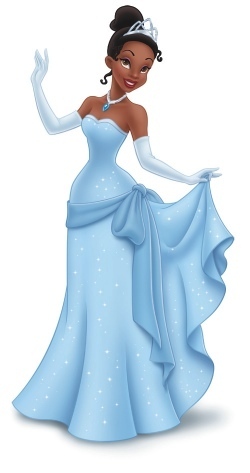
#1: Tiana, The Princess and the Frog
Tiana nets the top spot on the list of best Disney role models for girls and young women. Like Belle and Cinderella, she doesn’t begin as a princess. She’s a hardworking waitress holding down two jobs in 1920s New Orleans. She doesn’t dream of a prince or even a night out of the kitchen; she wants to earn enough money to open her own restaurant. To that end, Tiana goes tirelessly after her goal. She’s grateful for every little bit she can put toward it, and doesn’t mind if others are skeptical. She teaches girls what it means to work for a dream rather than simply wishing for it to come true. Additionally, Tiana is a career woman in a time when young black women like herself didn’t have many options. She teaches girls to hold onto and work toward their dreams no matter what odds are against them.
Tiana’s true role model potential doesn’t shine through until later in the film, however. During the climax, the villainous Dr. Facilier offers her a deal. If she will hand over the talisman he is using to control the voodoo spirits at his disposal – thus letting him take all New Orleans’ souls – he will restore her to her human state. If not, she will remain a frog, as she has been since kissing Prince Naveen (also in amphibian form at the time). Along with restoration, Facilier promises Tiana her restaurant, and a chance to disprove people who believed she should stay a menial laborer because of her background.
Tiana is tempted, but ultimately refuses, even after Facilier brings up her father never realized his dreams, either. In a crucial flashback, she is reminded of the love between herself and her parents, and the good times they had as a family. “My daddy…had what he needed,” she snaps at Facilier. “He never lost sight of what’s really important, and neither will I.” When confronted with the opportunity to obtain everything she’s worked so hard for, Tiana puts her own selfish desires aside for the good of others. She privileges love over material riches, and embodies a valuable lesson about the difference between what we want and what we truly need.
Top Five Worst Disney Female Role Models
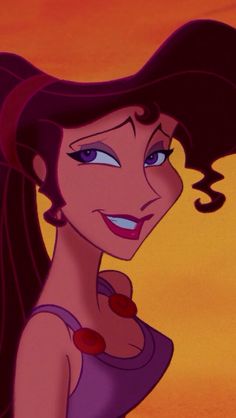
#5: Megara, Hercules
For every best, there is a worst, and for every positive Disney role model on this list, there is a negative one. Megara of Hercules gets the fifth spot on the “worst” list. One of Meg’s most famous quotes is, “I’m a damsel; I’m in distress; I can handle this.” Many women embrace the quote as an embodiment of strong womanhood. Megara is strong, but the way she uses her strength – or doesn’t – is a problem. Most of her activity involves flirting with Hercules or other male characters. She tries to help Hercules out of Hades’ schemes, but doesn’t take much of an active role. As Doug Walker, the Nostalgia Critic, said in his review of Hercules, Megara is “just one-liners and a sneer.” Other than snarky comebacks and sensual moves similar to Esmeralda’s, she doesn’t have much going for her. She seems to teach that feminine strength is more about talking the talk than walking the walk. Her behavior also hints that girls and women should rely on sensuality to get what they want if smart or witty dialogue doesn’t work.
Furthermore, Megara is a prime example of a woman who portrays independence incorrectly. Viewers learn she sold her soul to Hades to save a former boyfriend’s life. Though her motives were noble, she makes unnecessary blunders after the fact. Specifically, she betrays Hercules rather than telling him the truth. She also allows Hades to continually berate her, when viewers know she could easily tell him off, if not escape. Megara’s independence keeps her from reaching out for help, being honest, or standing up for herself. The best way to care for yourself, her character indicates, is to fight your battles alone, often in ways that hurt others.
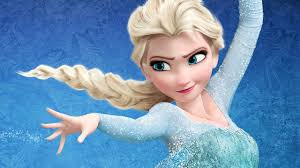
#4: Elsa, Frozen
Queen Elsa has become an icon, as has her ballad “Let It Go.” Yet evidence suggests this powerful queen is not the best role model for girls aspiring to act like royalty. Unlike Megara, Elsa has a fully developed character and complex motives for her actions. As Queen of Arendelle, she tries to lead her country as best she can. However, Elsa carries plenty of unresolved baggage. “All you know is how to shut people out,” her younger sister Anna accuses – and she’s right. Elsa has learned the best way to cope with her problems is running away. Perhaps as a child, this could be blamed on her parents, who effectively taught Elsa that ice powers made her a monster. As an adult though, Elsa has more freedom to reach out to Anna and others. She could overcome her fears, but doesn’t try. Instead she remains stuck in the past, despite declaring in song that her pain is behind her.
Whether she means to be or not, Elsa is cold and uncommunicative. At times this comes across as self-righteousness, like when she refuses to give Anna her blessing to marry Hans, but won’t consider why her sister needs love so badly. Although Anna offers her help and support, Elsa persists in a state of learned helplessness. “I can’t control the curse,” she laments. In this state, she continually labels herself a monster and takes on more guilt for iced-over Arendelle than she should. Like Megara, Elsa teaches covering up problems or fighting them alone equals strength. More disturbingly she, more than any damsel in distress, seems to embrace helplessness.
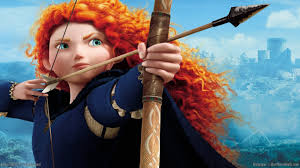
#3: Merida, Brave
When Brave debuted, Merida was heralded as another strong princess, comparable to Mulan or Pocahontas. She’s an adventurous tomboy with an independent streak a mile wide, traits that could become positive if nurtured and tempered well. Unfortunately, Merida has not yet learned the concepts of power under control or grace under pressure. Her desire to buck the royal system, especially arranged marriage, is understandable. Yet she constantly throws teenage tantrums and disrespects her parents while trying to escape the system. She refuses to consider her mother Queen Elinor’s point of view, although the latter is a wise woman with great advice to give.
Merida is also selfish to the point of hurting others. She follows the will o’ the wisp and becomes involved with a local witch without any thought toward consequences. Offered the chance to “change her fate,” she jumps on it without considering what such changes would mean for others. Anger at her mother fuels Merida’s decision to leave her a tart she knows will somehow change the queen and may harm her. Merida and Elinor spend the rest of the film cleaning up Merida’s messes. Throughout Brave, Merida acts the part of rebellious teen, a role Disney viewers have seen countless times. Thus she hurts her movie’s plot, but more importantly, her character. She teaches girls the best way to exhibit strength and change the world is through recklessness and insistence on their own way.

#2: Aurora, Sleeping Beauty
The best way to describe Aurora is “vapid.” Some Disney fans might say she has an excuse since she’s asleep for the second half of her movie. However, it’s what Aurora does – or does not do – when awake that makes her a negative role model. She spends her time staring out the cottage window daydreaming, or dancing and singing in the woods. She doesn’t engage in anything productive, except a halfhearted attempt to pick berries in one scene. To make things worse, her dialogue doesn’t indicate any interest in the world around her or what she could learn from it. What little dialogue there is seems stilted, airy, and boring. Aurora apparently has no interests outside dreaming of a prince, making her the definition of what many princess critics dislike.
Unlike Tiana, who resists temptation, Aurora constantly gives in to it because it looks enticing. She shares an intimate encounter with Prince Phillip, not knowing who he is. Young viewers are meant to understand Phillip is Aurora’s true love, which is supposed to justify the encounter. In real life though, a girl who behaved as Aurora did could find herself seriously hurt. Later on, Aurora pricks her finger on the spindle, despite the good fairies’ caution to stay away from the spinning wheel. It could be argued Aurora was just fulfilling Maleficent’s prophecy, but she still had the choice to listen and think through her actions. “If it feels good, do it,” is this princess’ motto – one that could endanger the real children that parents work to protect.

#1: Ariel, The Little Mermaid
Of the negative role models among Disney heroines, Ariel might be the worst. She embodies many negative traits and behaviors of other heroines on this list but takes them to a different level. Not only does she become engaged to a man she just met, she’s willing to change her entire life for a man with whom she has never had a conversation. The Little Mermaid wants us to believe Ariel’s encounter with Eric is love at first sight, but she doesn’t even set eyes on him for long. She embraces lust, not love.
Like Merida, Ariel acts the part of a rebellious teen. Granted, her father is overprotective and prejudicial in his response to humans, but Ariel refuses to consider his point of view. She takes her rebelliousness further than Merida, though. She throws herself straight into the grasp of Ursula, knowing the sea witch is evil and knowing her actions will break her father’s heart. Ariel is willing to practically sell herself for an idealized future viewers know Ursula will do everything possible to sabotage. When Ursula recaptures Ariel, the mermaid tearfully apologizes and says she “didn’t know” what she was getting into. But Ursula clearly spelled it out for her; she knew and entered an unscrupulous contract anyway.
Finally, Ariel does not learn anything from her travails. As Doug Walker puts it in his “Disneycember” review, “She whines and complains, and in the end, she’s rewarded for it.” Indeed, Ariel spends much of her film whining or complaining about her desire to be human. She seems to appreciate nothing in her current world. She shows regard for no one and often puts those she claims to care about, such as Sebastian and Flounder, in danger. Rewarding her behavior teaches nothing other than, if girls whine and rebel enough, they will eventually wear others down and get their own way. “I’m sixteen years old; I’m not a child,” she insists. Ariel’s behavior suggests she is in fact the most immature and childish of the entire Disney heroine lineup.
Works Cited
Blake, Meredith. “Jon Stewart Slams Disney’s Makeover of ‘Brave’ Princess Merida.” Los Angeles Times, May 17, 2013.
Disney, Walt prod. Beauty and the Beast. Walt Disney Films, 1991. Film.
Disney, Walt prod. The Hunchback of Notre Dame. Walt Disney Films, 1996. Film.
Disney, Walt prod. Frozen. Walt Disney Films, 2013. Film.
Disney, Walt prod. The Little Mermaid. Walt Disney Films, 1989. Film.
Disney, Walt prod. The Princess and the Frog. Walt Disney Films, 2009. Film.
Walker, Doug. Disneycember, 2011. Film.
What do you think? Leave a comment.
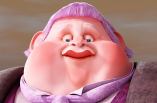

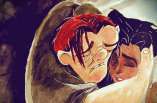








I feel like generally, Brave does not get as much credit as it deserves! It is a wonderful movie with three-dimensional characters and an incredibly positive message!
Milan is the ultimate feminist. She goes against the only thing left for women to do what she wants. And she wasn’t even looking for a husband, one just followed her home.
Interesting article. I disagree with a lot (maybe most) of it, but you explained your points, even if I don’t agree with them.
@Cicely: I tend to agree. I just chose not to include Mulan because so much has already been said about her positive traits/role model status.
@Tuggle: I do enjoy Brave, and I like Merida. However, I tried to be as objective as possible in choosing the characters for my list, and she ended up leaning more negative for me.
Well written article. The Little Mermaid was one of my favourite movies growing up as a kid (along with pretty much every 80s and 90s Disney film). While I will concede that Ariel is not the best role model, many believe the original was representative of Hans Christien Andersen’s repressed homosexuality. It is important to show all kinds of people, even those of weaker constitution who we possibly shouldn’t look up to; but hey, at least Ariel didn’t die and become sea foam.
This article is an interesting look into the best and worst role models Disney has to offer, and I do agree with a lot of it. I wouldn’t necessarily say that Esmeralda’s provocative dancing is a bad thing– maybe not something for young children to emulate, but not bad.
On the other hand, your analysis of Ariel is spot-on: she’s childish and immature, and not a good role model for young children to follow.
I tend to agree Esmeralda’s provocative dancing is not a huge issue, since it would probably fly over kids’ heads (it did when I first saw Hunchback, for one). But considering the rest of the movie’s tone, it might be something some parents find disconcerting. Then again, I’d say they’d definitely be more disconcerted by Frollo.
Some people may argue that Mulan isn’t a great role model. The article stated that some critics believed the film was “offensive because it teaches a woman must act like a man to be accepted or feel comfortable with herself.” However, the movie’s message is that it doesn’t matter if she is female or male. She’s a strong soldier who earned Li Shang’s trust and respect. She saved her country and brought honor to her family. After her secret is revealed, Mulan says to Li Shang, “You said that you’d trust Ping. Why is Mulan any different?” I believe Mulan is a wonderful role model for females like myself.
I agree with TooBusyReading that Mulan is also a great role model. Often too much time is spent defining strength in terms of masculine and feminine, when in this particular case, strong is strong and a trait to be celebrated.
I do love that you included Tiana. She is truly a great role model for all the reasons you bring up.
Couldn’t you argue that Elsa was incredibly sheltered just like her sister, Anna? Perhaps that is one of the reasons why she is so cold and uncommunicative.
You absolutely could. As a big fan of Elsa, it kind of hurt me to put her on the negative list. Had I not, I would’ve had two characters from the same movie on one list, and possibly had an uneven number. More importantly though, the more I thought about Anna, the more I wanted to point out she should be defined by something other than her mistakes. I also feel that because Elsa has gotten so much attention, Anna needed to be brought to the forefront. But again, if I had to pick a favorite Frozen character, it’s Elsa.
I think the list is pretty accurate!
Merida is the only Disney princess that was a combination of head strong, tough, and didn’t need a love interest to drive her story.
In addition, Merida’s faults and recklessness are acknowledged many times in the movie. She comes to regret how brash her decisions were and uses this knowledge to develop more as a character. Though I wholeheartedly agree that most of her actions in the movie, until near the end, are selfish and ignorant, the primary growth of her character is coming to terms with the consequences of her actions and to correct those wrongs, which I think is a valuable lesson for kids to learn.
I’m glad someone else thinks Ariel is a bad role model
Vey good article. I agreed with a lot of your points and even with the ones I did not agree on, you listed your points, and I could see where you come from. I liked how you listed the good and the bad in each princess.
Wonderful article, as usual. I 100% agree with both of your top fives.
I respect your opinions because they really got me thinking. All of them except for Ariel, who I believe is a great role model.
@BEAR: Well, I love to make people think. And, you made me think. Out of curiosity, what makes you say Ariel is a great role model?
I too am curious@ Bear, I too am curious, Why do you think Ariel is a great role model?
Interesting read. The princesses, just like us, are not perfect. I think it is important to look for the positives and draw inspiration from Disney’s characters, but some of the negatives you mentioned are hard to ignore.
The main value of your article is that women, even animated women viewed by young girls, should not be seen angels or demons, Madonnas or not Madonnas. Every woman has good and bad points. Perhaps the best depictions of women are ones that portray the complexity of women rather than stereotypical vapid Sleeping Beauty characters. Also I appreciated your racial inclusion. Good for you!
On that note, Frollo’s obsession with Esmerelda can be seen as his fetish with the exotic. Frollo “others” what he secretly lusts for and the contradictory dynamic is actually quite common. One of the most famous examples is Senator Strom Thurmond who build his political career on segregation, all the while fathering a biracial child. See the link below:
http://www.dailymail.co.uk/news/article-2273593/Secret-black-love-child-segregationist-Senator-Strom-Thurmond-dies-age-87.html
My favourite Disney princess is the unprincess Esmerelda. Loved your video clip.
My ranking would be #1 Esmerelda, #2 Princess Jasmine, #3 Pocahontas #4 Mulan and #5 Elena of Avalor.
On the male side #1 Mufasa, #2 Capt. Li Shang, #3 Tarzan, #4 Aladdin, and #5 Phoebus/John Smith. Perhaps a future article on this topic would be in order.
Hmmm, a male-centered article…interesting idea. A lot of Disney’s earlier males don’t have much personality to work with, but they’ve gotten a lot better. I love your choices.
You should go for it Stephanie. Ranking the male heroes would be good!
I’ll let that idea simmer; I like it. 🙂 I’m also curious about the Disney males and females that are either secondary characters or only seen on TV (Elena, Sofia, Kion, etc.) Our current generation of little kids will grow up in a time when Beauty and the Beast, Aladdin, and so forth are considered “older” movies (scary). But they may draw inspiration from much newer characters.
I prefer the term “classic” Disney. : )
I find Disney recycles their successful movies into plays, theme park attractions and now live action films but uses more contemporary stars to attract the latest generation.
A point Marvel has been quick to appreciate with Spiderman’s homecoming featuring Zendaya as the latest MJ.
I guess if Disney is going to use movies to launch all their attractions, they want to hold onto their classic heroes and heroines.
Merida is such a BOSS!
I enjoy reading your articles and I love your long paragraphs nd you can make great points. nice article!
Very insightful and comprehensive article. There are a lot of things I agree and disagree with about your interpretation of the princesses’ qualities, however, you did a remarkable job arguing your stance and giving a detailed and in depth explanation.
Aurora has less personality than sandpaper.
Ariel always irritated me with her childishness and the fact she threw away everything for someone she’s never even talk to.
I liked her when I was a little kid, but then again, that’s being a little kid. From an analytical standpoint, she’s not a strong character. She’s certainly more independent than the other three princesses ahead of her, but I think she misuses that independence.
Nice list overall, I especially enjoy the presence of Esmeralda, Anna and Megara, since it shows that members of the Princess brand aren’t the only Disney women that can be role models (or the opposite of one)
The lack of Mulan on the best side left me a bit surprised, although I appreciate your analysis of the characters’ qualities nonetheless.
Awesome!
I feel like Mulan is better than all of them.
Very well-done article, and it really shows you put a lot of thought into this! Belle is the best role model in my opinion.
My only disagreement is I don’t think any of the princesses are bad role models. It just depends on who you relate too.
Your own personality can play into a lot. For example, Belle has always been a favorite of mine because I love to read and have been looked down on for intellectual interests. If you were an archer, a tomboy, or felt other people always controlled you, you might relate better to Merida. Adding the personality dimension makes it difficult to draw lines in objective analysis, but it certainly makes things more interesting. I wonder now what other people’s lists would look like.
I really loved this article! I’m glad you included Esmerelda, since I always thought she was a great advocate for others.
I truly was one of the girls who kind of thought of Ariel as a bad role model.
Love this article! I’m so glad to see somebody giving Cinderella the love she deserves, as well as pointing out some of Ariel’s flaws. I thought I was the only one who thought that way about either of them. Great choice with Tiana being #1, but I think Meg was judged a little harshly. She did sacrfice herself for Hercules, not to win back his affections (because she knew she didn’t deserve them), but purely out of love and concern for his life. That doesn’t reverse all of the negative points you explained, which were true, but I think her nobility and selfless are enough to redeem her from being simply a negative role model.
Glad you liked the article. Yeah, Meg is pretty hard to pin down. I agree with the positive points you mentioned. I gave her the lowest spot on the negative list because of those. She’s also on the negative list partially because when compared to the other positives, she doesn’t have quite the “punch.” That may be because her character is less developed, though.
Lovely article Stephanie, interesting that Elsa was in the worst lists given her immense popularity however I agree with your points about running away and shutting people out.
Belle was always my favourite – but I agree with you about Tiana. Thank you for shining a new spotlight on her contemporary qualities!
I think all of the princesses are good role models. You really got me thinking about what makes a good role model.
Well, that was my goal. You’re right, all the princesses have their strong points (I admit I really struggle with Aurora, but then, she only had 18 lines, so it’s probably more the production team’s fault). Who is worth emulating is completely subjective, and will depend a lot on the characteristics people value most, how they grew up, what they want to develop in their kids, etc.
A really interesting article. I agree with a lot of the points you have brought up but then it gets me thinking do we sometimes take these analysises too far. I grew up loving Ariel, my favourite Disney princess, but I never looked at her as a role model as such, instead just as a character in a movie.
It makes me wonder what today’s society is really teaching children if they are looking to Disney characters as such intense role models i stead of just enjoying the movies
You raise a valid point. It may be that we are so concerned about what our kids are exposed to, that we look for role models everywhere. But you’re right, some things are not meant to be analyzed or imitated. That being said, I wrote the article mostly for the sheer joy of analysis.
Such such a good read. Awesome job
A decent and well-argued list. Nice job!
What I think would be interesting to consider is whether or not female villains can also be placed on a list, ranking them in order of their status as role models. Of course, villains are usually not characters you wish to be looking up to as role models, but I believe that there are always specific elements of a character that you can admire, no matter how devious or despicable they are. Just a thought.
Again though, great list
Hmmmm…that *is* an idea. I recently saw something on Pinterest that gave the Disney villains virtues, and the heroes vices. For instance, Dr. Facilier is painted as generous, while Tiana is given the vice of greed. With setups like that in mind, it might be fun to put Disney villains on a list of their own.
a very polarising topic indeed, interesting that you put belle on the inspiring role models side of the list. You make a compelling arguement for why she is an admirable character, but I just find it hard to see past the whole premise of that Disney movie. The man, is the beast and the woman, the beauty, it takes the loving feminine touch to cure him of his ‘disease’. It pedals the continuing idea that a womens value comes from her looks and relegates them to a role of carer.
a very polarising topic indeed, interesting that you put belle on the inspiring role models side of the list. You make a compelling argument for why she is an admirable character, but I just find it hard to see past the whole premise of that Disney movie. The man, is the beast and the woman, the beauty, it takes the loving feminine touch to cure him of his ‘disease’. It pedals the continuing idea that a womens value comes from her looks and relegates them to a role of carer.
Well, you wouldn’t be the first to say so, and I can see where you’re coming from. I agree, it’s unfair that women are always expected to care for and “cure” men, and not the other way around. With that said, I’d argue the Beast teaches Belle a few things, too. When we first meet her, she longs for what is basically a fantasy life. But when she gets it, she realizes that life is as problematic as her old one, probably more so. I’d argue the Beast improves Belle’s ability to persevere with people when it would definitely be easier to walk, or run, away. Additionally, Belle initially judges the Beast the way the townspeople have judged her. It’s certainly justified, but it does add an interesting dimension to their relationship, as they both learn to see beyond face value.
And what are your thoughts about Moana?
I don’t know; I haven’t seen Moana yet.
Nice Article. There are always many sides to a character.
Finally someone has recognized Tiana as the best disney princess! I thought I was the only one.
No, you are definitely not the only one. 🙂 Tiana rocks.
I don’t particularly like the perspective that there’s a wrong way to be a woman – ie the princesses acting in ways other than you want aren’t good role models – when the entire point of feminism is a woman is able to be whoever and whatever they wish to be.
Aside from that great breakdowns of the women, nice article as a whole!
Thanks–and you’re right, feminism has room for all types of women. I simply think some Disney women do better jobs of representing certain types than others. For example, yes, there are Auroras in the world, and they deserve to be celebrated as women. However, showing someone who literally sleeps through most of her film, only to pine for a man when awake… Oh, well, it was the ’50s. What are you gonna do? 🙂
Great list!
Is Tangled a Disney movie?
I always felt like Tangled was eclipsed by the maddening and (in my opinion) unjustified success of Frozen. The immature and self-centered nature of Anna and Elsa and the mess they create, discouraged me from considering them as role models to my 5 year old.
Though she is not not without fault, I much prefer Rapunzel from Tangled as a role model. Her energy, interests, determination, resourcefulness and kindness are traits that I would prefer my daughter emulate. Rapunzel is not waiting for a prince who will save her, but finds her own path and means.
The reign of the old Disney princess is over and my little one will never watch Cinderella, Snow White or Little Mermaid lest her tender mind be filled with notions of helplessness and sugar-coated misogyny.
Oh, and thank you for introducing ‘vapid’ to my vocabulary. Love it and can’t wait to use it myself.
Definitely caught my attention. I can see where you’re coming from and I wouldn’t 100 percent disagree with all of the names you’ve included to this list. I may have a few different views and outlooks on this topic. especially with comparing the old times and new ones of Disney. interesting article tho!
Haha I definitely agree about Ariel not being so great a model, but I even more so agree about Tiana! She is a hard-working woman who supports the people she loves in tangible ways. Another one I would add to the good role models list is Mulan! I remember when I first saw Mulan and how freaking awesome I thought she was! She tries to respect her family’s wishes, but she also will be the one to take charge and step up to the plate to protect her loved ones.
Great article and eye opening to some of these characters. Unfortunately my children are already grown up but will share so that when they have children they can be informed and decide for themselves what to show their children.
It was honestly so refreshing to see Cinderella on the top five. It kind of irks me how people claim characters with meek personalities can’t be strong or show admirable qualities. You brought up some valid points over Megara’s role in the story. Even though she was snarky and supposedly strong-willed, she made some incredibly weak, easy decisions.
This list was pretty well thought and with explanations it makes sense. To be honest, when I was a kid most things considered un-feminist or not sending a good message to young girls, like provocative dancing, passed over my head. It is only after re-watching the movies in recent years that I have observed some of these more mature aspects of the movies. I think that since children watch these movies in a light-hearted matter it is not as big of a deal as some parents make it out to be… We all have encountered at least one of those over-the-top parents that forbids and shames everything and their kid is a saint, that does nothing wrong.. especially if you volunteered at schools a lot and babysat, and went to camp (or even just by going to elementary).I think that at the end of the day we have to understand that some of these movies were done when women had practically no rights, and that Disney is progressing just as we are.
Anyways, good work! 🙂
I believe Ariel is not given as much credit as she deserves in this piece. While I agree that she went overboard in making a dark deal with Ursula, she did want to become a human first, before meeting Eric. During the beginning of the film, Ariel sings a song to Flounder stating that she wishes to be human. She is curious to see the world beyond the seas, and ultimately her first, deep crush on Eric make her decide to go for it (get a pair of legs and explore the world). If you observe closely, Ariel is more interested in seeing everything about the world (riding a carriage, dancing, trees, forks), than paying attention to gaining Eric’s love while she and him are strolling through Eric’s town. Eric just helped her around and made her feel more at ease (in a way, she was using him). Ariel was not the one who actually rushed to be married, it was Prince Eric who was getting married off quickly (as stated while he is on his ship with the rest of his crew celebrating his birthday). In addition, Ariel tried fighting Ursula herself when she tried stopping the wedding between Ursula and Eric, and when Ursula was trying to attack Eric with the Trident. The reason she could no longer help after that was because she landed on a piece of rock with no weapon to help her. For this reason, while Ariel may not be the best role model, she is also not the worst.
Great article! Thanks for showing a different point of view on some of these characters. Megara and Merida are two of my favorites, some points you brought up about both have never really crossed my mind before such as Meg’s use of her sensuality. Also how she is strong and independent but may use it the wrong way. They’re still favorites of mine but the different perspective was interesting!
Nice ranking butI don’t think Disney princesses qualify as role models for girls. They are antifeministic, Comicbook superheroines are perfect role models. Just read this article
https://simpleexplainations.blogspot.com/2018/09/why-disney-princesses-are-not-perfect.html
I agree that Merida has her flaws and can throw tantrums but she is also a teenager. I think the idea that she can look past what her parents want for her to what she wants is a great thing to achieve. Just because a parent is successful, or has great reasons for why they are doing something, doesn’t mean that they are correct in what is best for you and how you should live your life. Parents are people too and can be blinded by their own emotions and ideas of how a life is best lived. Many of the people who changed the world wouldn’t have if they listed to their well meaning and wise parents.
I was afraid this would be another article bashing the original three princesses, so I was pleasantly surprised!
People are so quick to dismiss Cinderella and don’t realize that in many ways she represents an important role model for victims of domestic abuse who feel trapped and dream of better days.
Cinderella was manipulated and threatened every step of the way and though yes, she could have ran away, realistically that could have ended much worse for her.
Through it all she never hurt anyone and showed kindness to those weaker than herself.
For Cinderella to have rebelled in her story, she could have faced being cast out in a time when a woman may have been forced into prostitution, starvation or at best, working somewhere else in a strange place.
As you pointed out, she did not seek the prince, that wasn’t even in her dreams! All she wanted was to be free and enjoy herself. When she met the prince, she didn’t know who he was, indicated by her words: “But I haven’t met the prince…” as her excuse to leave and then when it was all over and she was left in rags again, her first reaction was to thank the Fairy Godmother for giving her a night of happiness.
While it may be dangerous to sit around and hope for a FGM to show up and make things better, that’s not what Cinderella did. As long as kids understand that, I think she is a good role model.
I believe all of the princesses have good and bad points. We don’t see enough of Aurora to know what she is like, but she is probably the weakest as portrayed…(I still love her though.)
I like to think that had Maleficent not shown up to curse her, Merry Weather’s gift would have balanced out the rather shallow gifts Flora and Fauna bestowed.
Maybe a quick wit, problem solving or something along those lines. Merry Weather was much more practical!
I would say that Aurora is one of the most positive female role models, even being the Disney character with the least amount of lines. As a peasant, she is a loner and dreams of having someone to connect to. But when meeting her dream prince, she is obedient and plans to introduce them to her guardians because she is responsible. Later on she decides to assume her royal position even if it means leaving her love behind, and doesn’t try to fight or stay at the cottage because she decides that she has to be in the role she was born to be in. She isn’t even excited to find out that she’s a princess with riches and admiration of all her subjects because she cares about what’s important. When she is about to pluck her finger, she hesitates at first, showing she thinks before she acts, which marks her as being able to handle being a queen. I think she is more “queenly” than most of the other princesses. She is poised and mature even at sixteen. She isn’t like Cinderella or Snow White, the princesses before her. Everything about her character is wonderful, even tho she was sleeping most of the time.
I forgot about Esmeralda or Megara 🙂
ayayayayayayayyayayayayayayayayyayayayayay
amazing
I think it’s more about where the characters end up and less about what they had to go through to get there
I would actually rank the Disney Megara above Belle. Megara has more redemptive features in the sense that her actions come mostly from the right place. Belle lives in a bubble such that it takes a beast with his own issues to emerge from it (though she does redeem herself and the Beast). I will agree with Ariel, though. Indeed, if one were to look at the original story of the Little Mermaid, she dies in the original source material; she gets no happy ending. She is a completely cautionary tale.
I think when talking about Esmeralda as a role model, you DEFINITELY shouldn’t use the racial slur for the Romani people.
Mea culpa. Yes, I should have clarified the term is used in the film both as a slur by Frollo and an identifier by others, but is now considered a slur.
Agree completely with Ariel being #1 – she’s the worst. Where I disagree is with Merida. Yes she’s reckless, but the whole point of the movie is she and her Mom both learning to let go of their pride and accept the other for who they are. Her Mom was 100% in the wrong for forcing her to marry when she wasn’t ready and to someone she didn’t love (yes you can say that’s how it was done back then, but that doesn’t make it right and if it hadn’t have been for young women fighting against it, it would still be done today). She needed to learn and grow – AND SHE DID. They both did. They both also fixed/realized their mistakes. Mums and daughters often go through rough times (especially when they’re fiery individuals, I speak from experience). But when we hold onto each other, we eventually make it through adolescence closer and stronger than ever.
I definitely agree that Elsa’s lack of communication is what makes her so misunderstood. A lot of her behaviors can be rationalized, but her inability to communicate her feelings causes so much frustration.